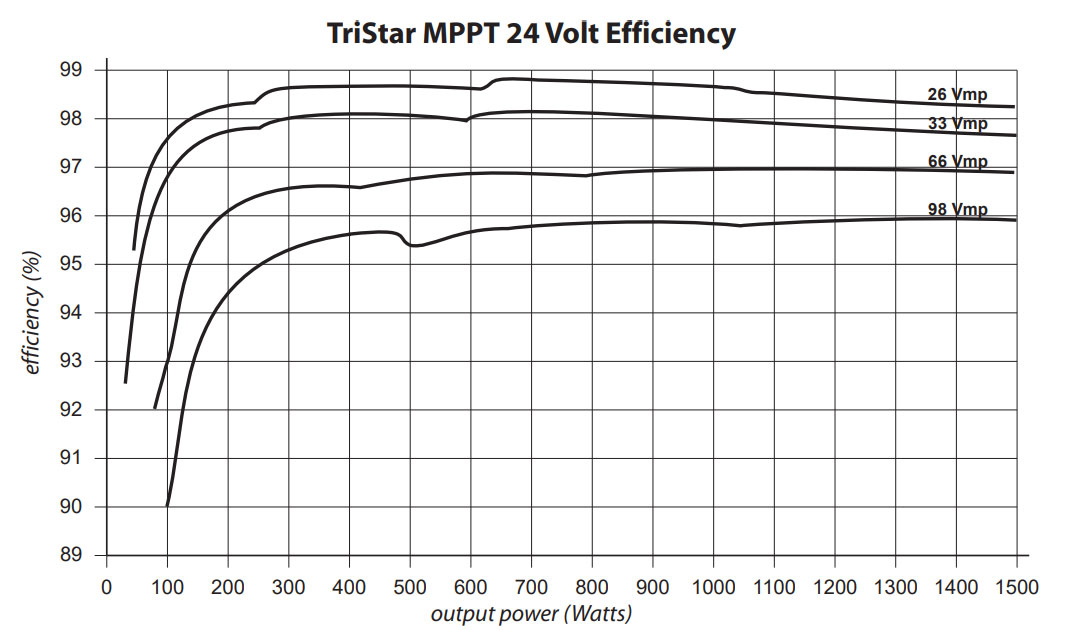This is with regards to the SmartSolar MPPT 250/100 controller. The higher the difference is between the array voltage and the battery voltage, the more power loss there will be in the controller, which will generate heat. I assume that there is only so much heat the controller can take, so there will be a practical limit to how many volts the array can be at for a 100 A charge current. Anyone with practical experience in this? Any official charts I can look at? In my case my array is 125 V and my battery 24 V.
- Home
- Anonymous
- Sign in
- Create
- Spaces
- Grafana
- Node-Red
- Unsupported topics
- Questions & Answers
- Modifications
- Communauté francophone
- Deutschsprachiger Bereich
- Preguntas en Español
- Explore
- Topics
- Questions
- Ideas
- Articles
- Badges
question
SmartSolar 250/100: What is the max array voltage that will give 100 A charge current?
It's not a PWM and shorting to battery voltage. It tracking voltage and amps from the array.
The controller will get hotter the more wattage it is processing more than the battery voltage vs the array voltage.
The controllers have overheating protection.
The practical limit is the 250v input and 70A max short circuit input of the controller.
Derating is in the manual.
An MPPT charge controller is basically a sophisticated buck DC-DC converter. Those are the most efficient when the input voltage is only slightly higher than the output voltage. See below chart that illustrates this for a Morningstar MPPT charge controller. The higher the array voltage goes the higher the losses are.

But with a lower PV voltage you have more losses across the wire from the panels to the MPPT or you need to use thicker wires.
The difference in that diagram is just around 3% IMO neglectable.
With the Victron MPPTs the PV voltage needs to be at last 5V above the battery voltage before the MPPT can start. After that the voltage difference can go down to 1V.
(The RS 450 needs a starting voltage of 120V and than can go down to a minimum of 80V)
At 2% inefficiency on a 24v system its about 48W of heat for every 2400w solar being processed. If your set up is efficient in wiring and set up.
On a (48v x 100A) system for the same amount of solar it is about the same. But if you panel to the max you will then see about 96w. Don't know if you have tried to hold an old incandescent 100w bulb after it was on, it's about the same pretty toasty.
As a person who has used both controllers get the Victron.
If you are really hung up about the input voltage get the Victron 150/100 mppt instead. Just make sure that at your coldest temps the panel voltage does not exceed 150v.
I'm not concerned with maximizing efficiency for efficiency's sake, and I don't worry about temperatures. I just want to know in what circumstances the controller can deliver 100 A charge current. Perhaps someone has noticed if the controller throttles the output current above certain array voltages.
question details
64 People are following this question.
